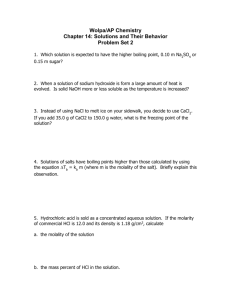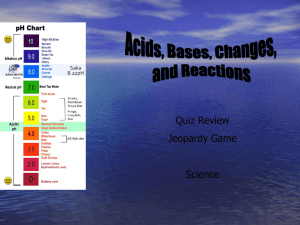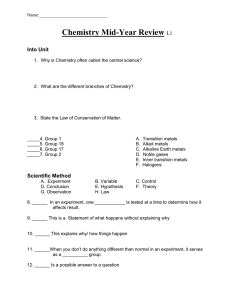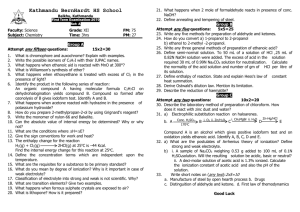final Exam-Fall 2005
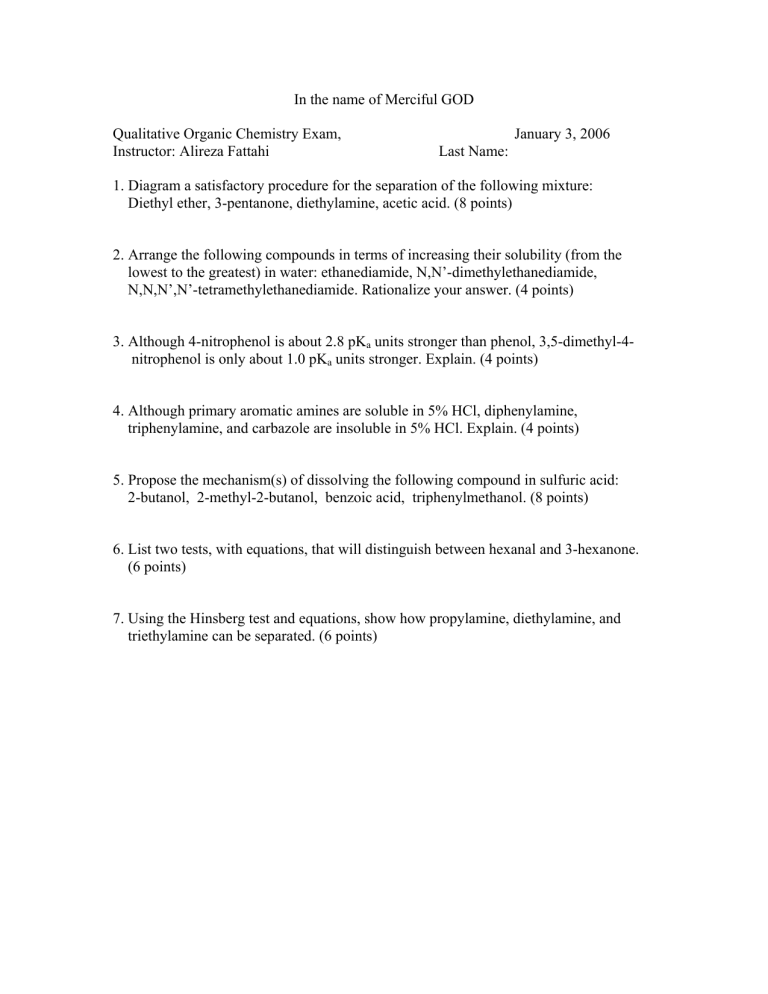
In the name of Merciful GOD
Qualitative Organic Chemistry Exam, January 3, 2006
Instructor: Alireza Fattahi Last Name:
1. Diagram a satisfactory procedure for the separation of the following mixture:
Diethyl ether, 3-pentanone, diethylamine, acetic acid. (8 points)
2. Arrange the following compounds in terms of increasing their solubility (from the lowest to the greatest) in water: ethanediamide, N,N’-dimethylethanediamide,
N,N,N’,N’-tetramethylethanediamide. Rationalize your answer. (4 points)
3. Although 4-nitrophenol is about 2.8 pK a
units stronger than phenol, 3,5-dimethyl-4-
nitrophenol is only about 1.0 pK a
units stronger. Explain. (4 points)
4. Although primary aromatic amines are soluble in 5% HCl, diphenylamine,
triphenylamine, and carbazole are insoluble in 5% HCl. Explain. (4 points)
5. Propose the mechanism(s) of dissolving the following compound in sulfuric acid:
2-butanol, 2-methyl-2-butanol, benzoic acid, triphenylmethanol. (8 points)
6. List two tests, with equations, that will distinguish between hexanal and 3-hexanone.
(6 points)
7. Using the Hinsberg test and equations, show how propylamine, diethylamine, and triethylamine can be separated. (6 points)
8. Give the product(s) and propose a mechanism for each of the following reactions: a. cyclopentanol + Lucas reagent (4 points) b. 1-cyclopebtylethanol + excess I
2
+ excess NaOH (6 points) c. PhOH + 1-naphtylisocyanate (4 points) d. Ethanol + 3-nitrophthalic anhydride (4 points) e. trimethylamine + picric acid (3 points) f. benzene + phthalic anhydride in the presence of AlCl
3
/CS
2
, heat (4 points)
9. Show what amines and carbonyl compounds combine to give the following derivatives:
(15 points)
(a)
(d)
10. Using the following information, identify the unknown.
The compound had a boiling point of 176
0
C. The compound was insoluble in water,
5% NaOH, and 5% HCl solution but soluble in 96% sulfuric acid solution. It gave negative tests with acetyl chloride, 2,4-dinitrophenylhydrazine, and bromine.The compound gave an orange color with chloroform and aluminum chloride. The IR, 1H
NMR, 13C NMR, and DEPT spectra are shown in following figures.
Note: Interpret all classification tests and spectra. Give equations for the formation of any derivatives. (20 points)
ppm
ppm
0
